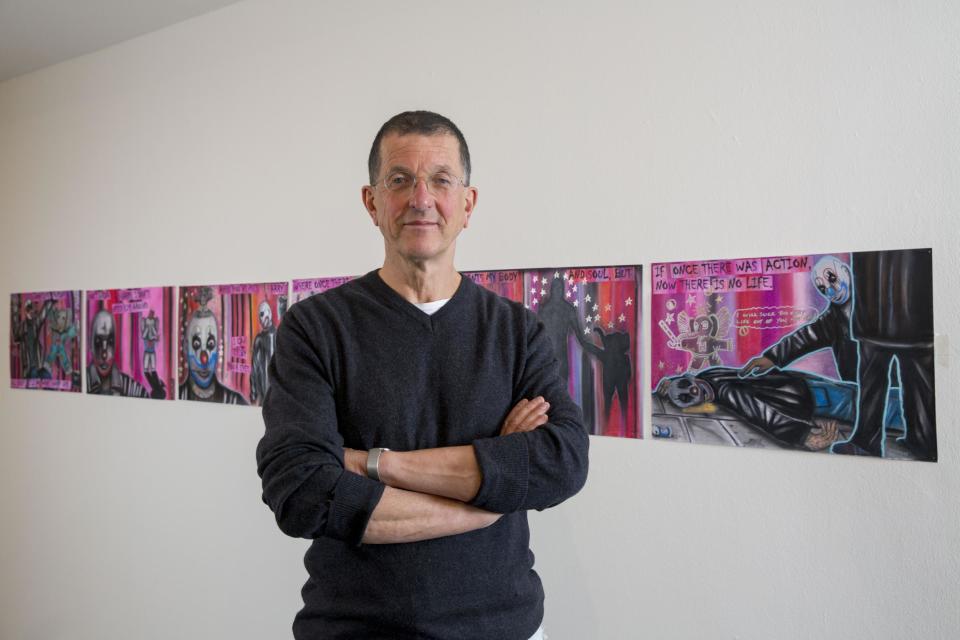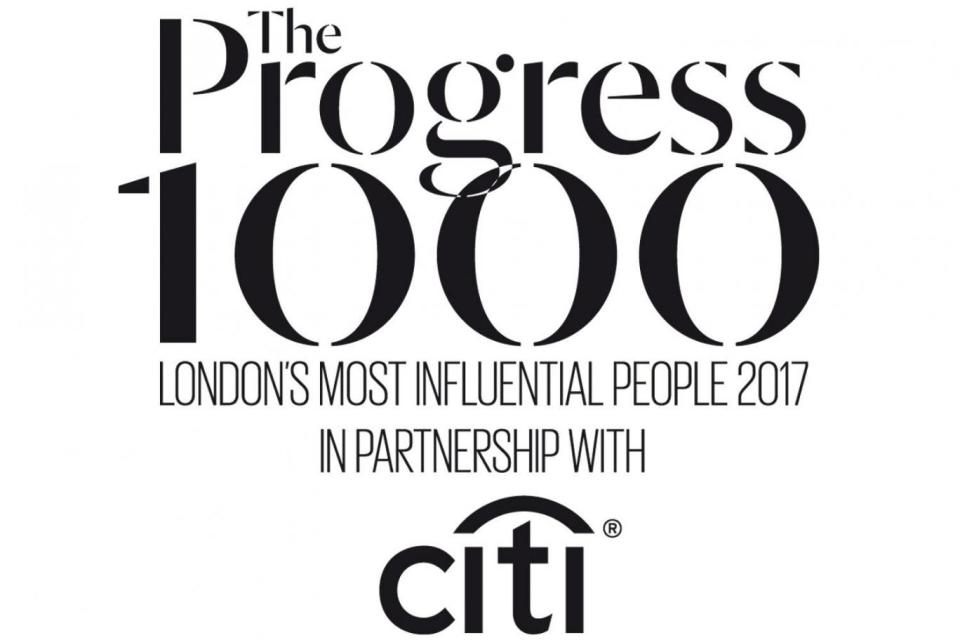Antony Gormley: 'I think prisoners could be the psychonauts of the 21st century'

Antony Gormley is just back from China, where at the Long Museum in Shanghai he’s just installed his first major Chinese exhibition. At the heart of this show is his Critical Mass (1995), a group of 60 of the figures that Gormley cast from his own body in various positions, from foetal to kneeling and standing — the enigmatic everyman that helped make him one of Britain’s best known artists. Closer to home, two more of the cast-iron figures have just been unveiled at the Folkestone Triennial, the latest of Gormley’s countless public projects which have drawn vast audiences.
Today, however, I’m meeting Gormley in the Spirit Level gallery in the bowels of the Royal Festival Hall to talk about a show he’s curated of other artists’ work. Gormley is behind the 10th edition of the annual exhibition of the work of detainees in UK prisons and secure hospitals, a show initiated by the Koestler Trust, a prison arts charity.
From the moment we meet I’m blown away by his sheer passion for the project. Rather than having a show of the “totally disparate group of stuff” that is usually seen in these exhibitions, he wanted a smaller, tighter selection. “I said I think it would make a much more coherent exhibition if we could find a theme, so I spent a bit of time at Lewes, at Pentonville, at Holloway just talking to prisoners, and saying: ‘If you had to think of a theme that would mean something, what would it be?’ And we came up with ‘Inside’.”
Gormley revealed to Channel 4 News this week that he had been briefly imprisoned himself — in Abu Ghraib in Baghdad, and in Lebanon. In both cases it was because he was thought to be a “spy for the opposite side”. He was also held on remand in Israel, he told Jon Snow, for bringing “some drugs back from the Khyber Pass”.
He links his life as an artist to his notions of imprisonment. “I’ve always thought that, in a sense, an artist decides to go it alone, and most artists’ lives are relatively solitary, in their own space — a self-imposed, defined location in which they go on their journeys of imaginative exploration,” he says. “And I naively thought, ‘Well, isn’t being in prison a bit like having an artist’s residency by grace of her Majesty?’ So I went with this idea. Look, there are 87,000 prisoners in British jails, this is an amazing resource — if astronauts were the great explorers of the 20th century, perhaps prisoners can be the psychonauts of the 21st. And let’s see what’s in there, let’s see what’s going on inside the minds of people whose bodies have been rendered unfree.”
When he visited prisons Gormley was profoundly affected. “The fact is that conditions in prison are not enforced hermitage,” he says. “They are usually in cells designed for one in twos or threes, often banged up with people they have nothing in common with.”

He describes visiting jail as “a very powerful experience”, giving up your passport, phone and wallet and going through airlocks. “It is palpable, the change in everything: suddenly you’re in a zone in which time has no purchase, and you realise that this is, in a way, a zone of life a bit like being underground or underwater, with its own rituals, its own pace, and everybody is immersed in it.”
He lists some statistics from a Government report last November: 84,976 prisoners in Britain, meaning “our prison population is nearly twice what it was in 1993”; that the imprisonment rate in England and Wales is the highest in Western Europe — 147 people per 100,000; that the number of women prisoners trebled between 1993 and 2005; that 324 people died in prison in the year to September 2016, a record number. He points out that “we have lost between 20 per cent and 30 per cent of funding to prisons in the last five years under this Government”.
The show “is not just about compassion”, he says. “It’s about recognising that even in these places where there is an extraordinary deficiency of hope that people can not only reflect on their lives in the world but transform them. I think we’ve lost the idea that prison is an extraordinary opportunity.
The truth is that it has become a university for drug addiction, for jihadism, for training criminals, when in fact it could be an extraordinary opportunity, from literally where people have fallen to a potential for radical transformation. And I guess that’s my appeal here, to us as citizens: this is to show that side of a civilised society, so-called — and if we are not attending to it, we are not attending to ourselves.”
Gormley is keen to point out that “this isn’t a party political broadcast”. He says he doesn’t want me “to write a diatribe against the state of British prisons” because “the point of the show is to say these are very touching, very real works”. Nonetheless, setting the context in the way he has only makes the achievements of the prisoners all the more remarkable.
His appeal to the detainees appeared in the prison newspaper and on prison radio. “I just said: ‘Let the outside world know what it’s like to be a guest of Her Majesty. What do you think about all day? What do you dream about at night? What’s it really like? Tell us’.”
He says he hoped it would be “a report from inside to the outside world — this is a narrow bridge but let’s use it to let people know what’s going on, not only inside your cell but inside your head, inside your heart, in a way, inside your spirit.”
When the works came in, while he saw “amazingly effective bits of highly technical work” he was looking for “emotional truth and directness”.
He points out a few sound works that can be heard on headphones: a male prisoner (all the detainees are anonymous) who reads a prose poem that takes us on a journey from being inside his mum’s belly, via real nightmares, to, inevitably, being “inside a coffin”.
In a moving piano ballad, a female detainee sings: “Not long ago I was sleeping on the road, trying to make a little pocket change. Trying to mask the girl that I once was, trying to become someone that I’m not.”
Gormley is charging about the gallery, listening on the headphones, telling me: “You must listen to this!” and enthusing: “There are so many examples of extraordinary talent.” He repeatedly compares the prisoners’ creations to those of artists, past and present. An embroidered work of cornflowers “has the energy of a Van Gogh”, he says. “Look at this pool of light that somehow brings the blue of these cornflowers right forward, the intensity of this is exquisite. The fact that this has come out of a prison is a miracle.”
He takes me to his favourite wall, with works mainly in black and white. And on it is his favourite work, he says: two photographs, accompanied by scrawled text. One features a figure, perhaps the artist, teetering on a high ledge, looking over a town with distant moors. “I can look death straight in the eye, whether it’s my time or not, I think nothing of it,” the writing says. Then there is another figure, the same man, doing a handstand on parallel bars, alongside the words: “Strength doesn’t come from having power, it comes from overcoming things you once thought you couldn’t.”
I ask Gormley why he liked this best of all. “I think it’s a declaration of self-determination in a place where there is none, against the final enemy, which is presumably death,” he says.
Gormley is now off to finish the hang of the show. I suggest he must be proud of how creatively the prisoners have taken on the theme. He nods. “It’s an amazing kind of vindication of the human spirit under extreme circumstances.”
Inside: Art from the 2017 Koestler Awards is at the Royal Festival Hall, SE1 (koestlertrust.org.uk), until Nov 15, admission free
Progress 1000
Each year the London Evening Standard reveals the capital’s 1,000 most influential people in fields as diverse as sport, business, the arts, medicine, politics, the media, music, fashion, the charity sector, high finance, technology, education, film and mathematics.
At a star-studded awards event, we also announce the overall most influential Londoner and previous winners during Progress 1000’s 10 years include Sadiq Khan, former England rugby captain Chris Robshaw, and then-Chancellor George Osborne. Prince Charles was named Londoner of the Decade last year.
This year’s Progress 1000 awards will be held on Thursday, October 19 and you can follow the build-up here at standard.co.uk as well as the event on the night when we unveil 2017’s most important 1,000 figures in our great city.

 Yahoo News
Yahoo News 